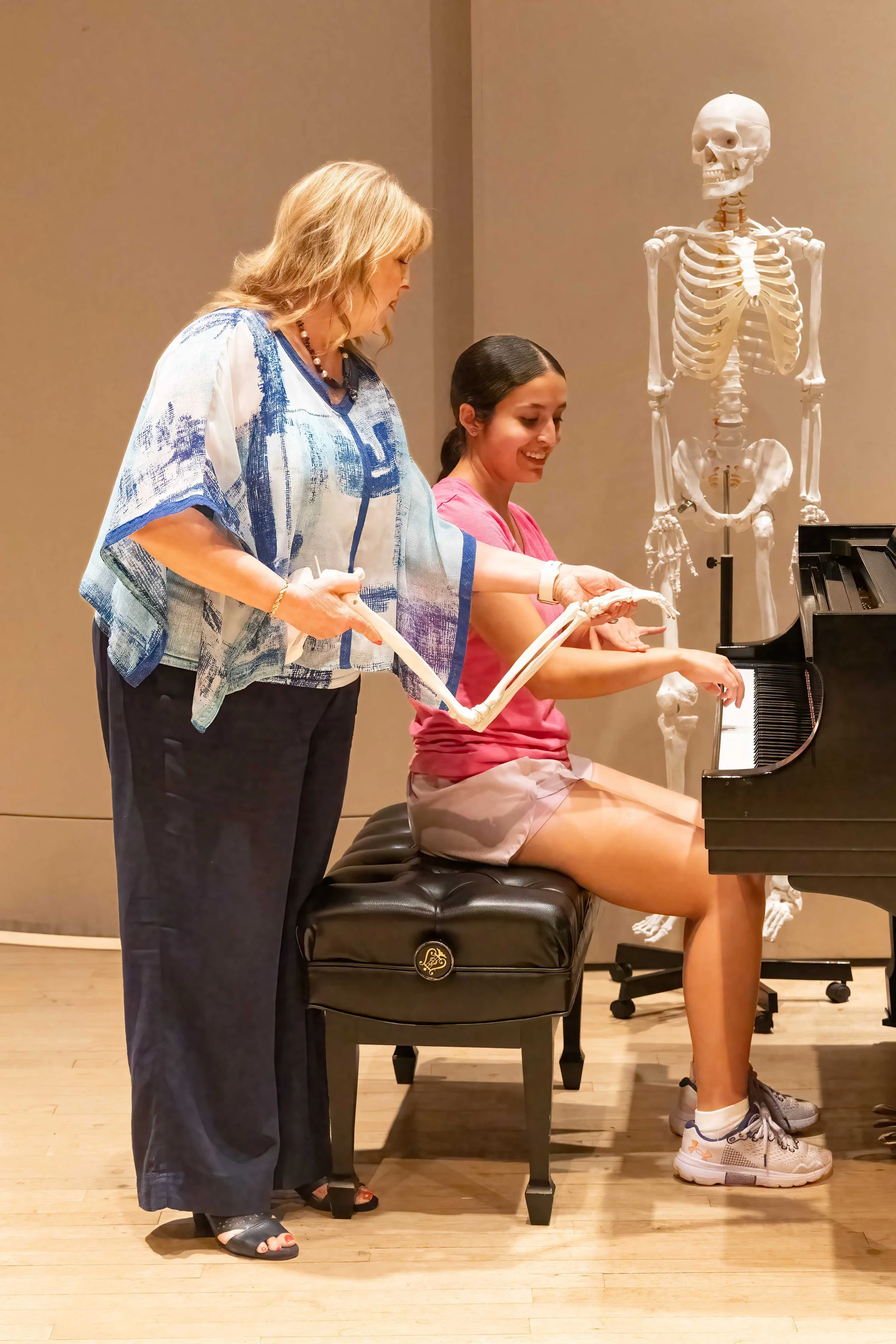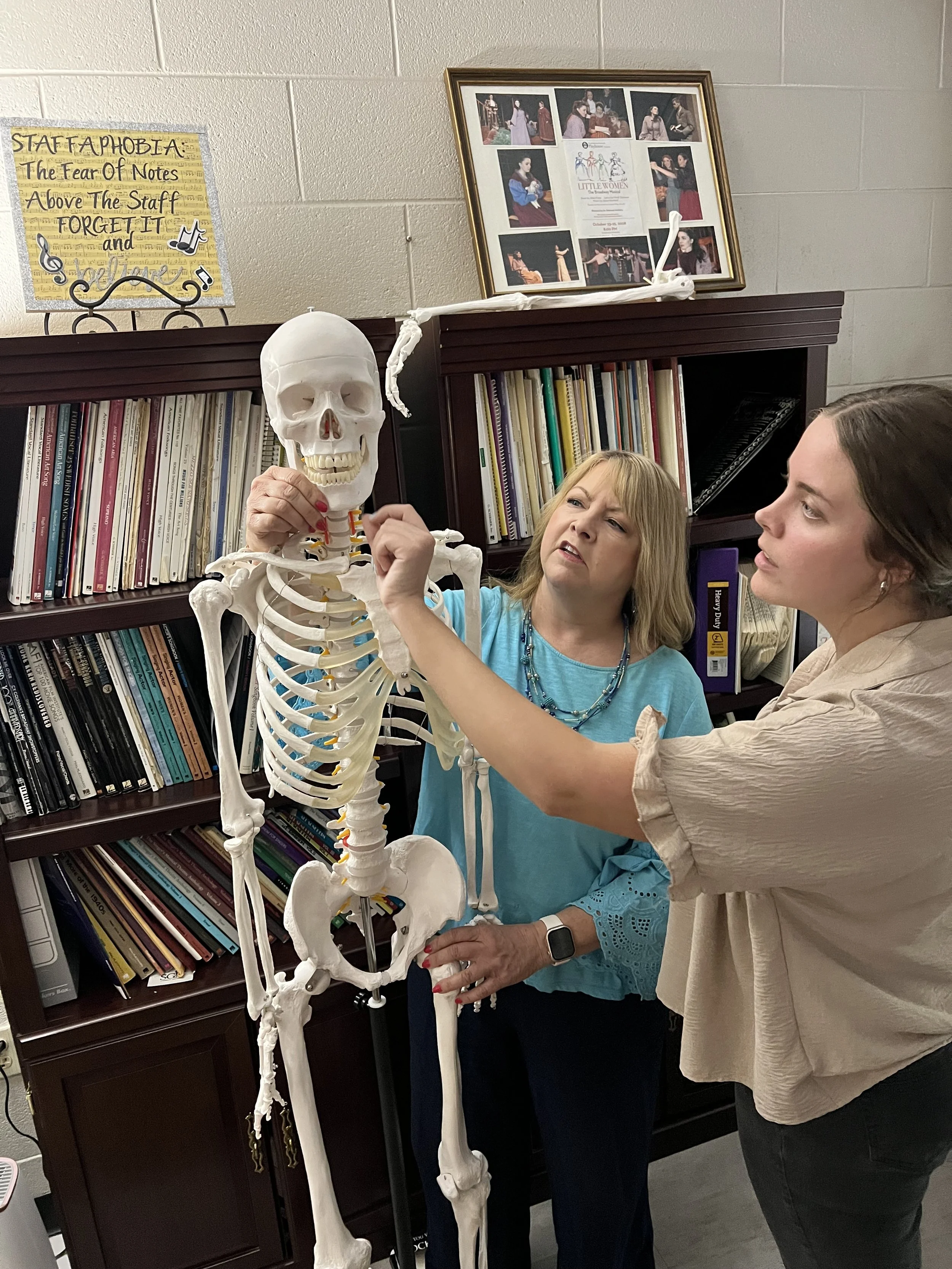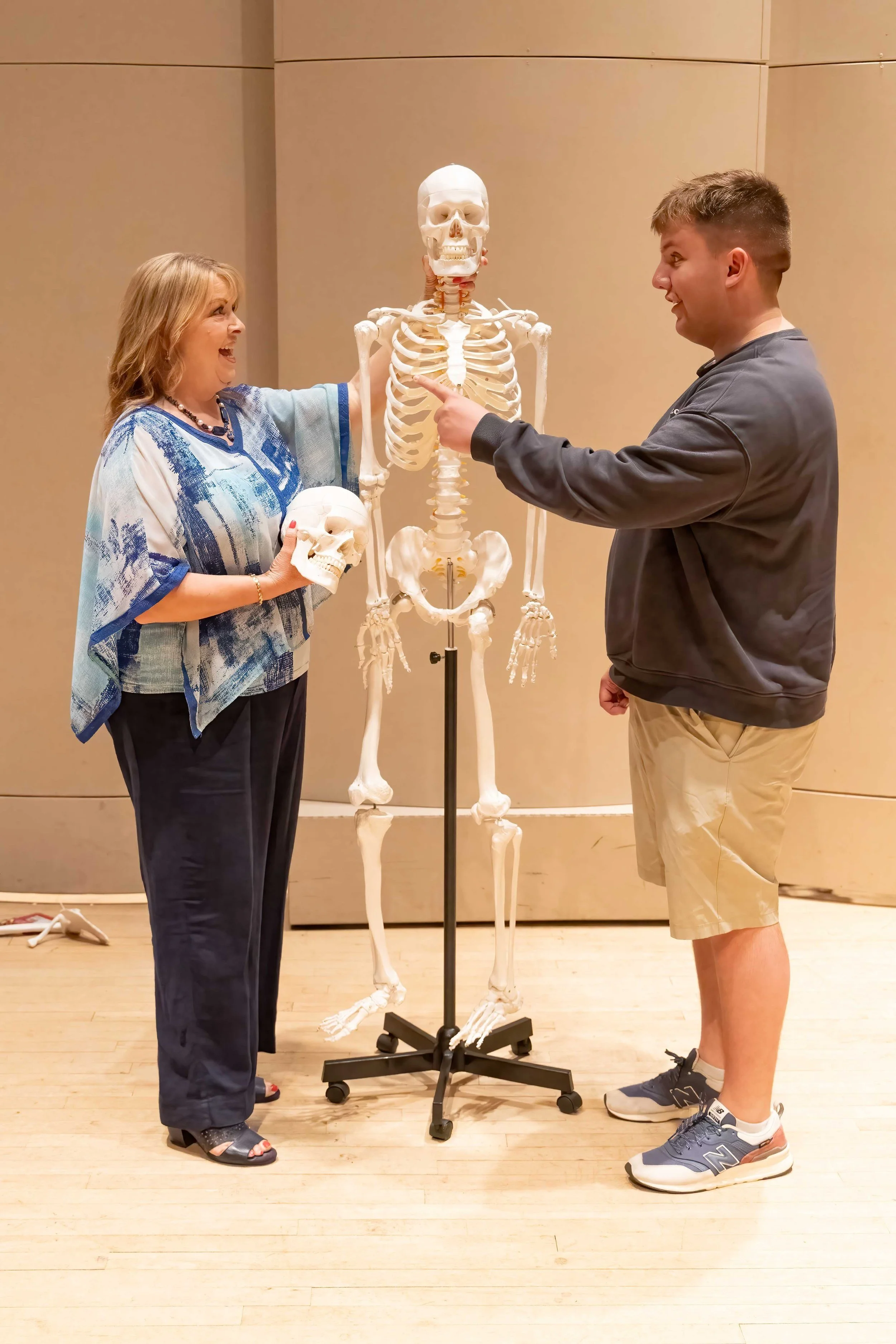What Is Body Mapping?
Your body map is your mental representation of your body—whether in part or as a whole. It’s how you think your body is structured and how it moves. When this internal map is accurate, your movement becomes freer and more efficient. When it’s inaccurate, movement can become restricted, uncomfortable, or even lead to pain and injury.
Body Mapping is not a technique, but it forms the foundation for all musical technique. The integrity of any movement—whether singing, playing an instrument, or conducting—depends on the accuracy of the body map that governs it. You move according to what you believe about your body. Thus Body Mapping helps you correct your body maps through kinesthetic awareness, self-observation and inquiry.
Body Mapping has reformed the way I teach. Its principles are deeply woven into my voice studio, choral rehearsals, and the way I approach vocal pedagogy. Cultivating free movement and body awareness opens the door to greater musical expression and freedom in technique.
I am a Licensed Body Mapping Educator through the Association for Body Mapping Educators (ABME), and I’m passionate about helping musicians of all levels improve their performance through deeper understanding of their own movement.
If you're curious about how Body Mapping can enhance your music making—or that of your students—I’d love to share more. Together, we can discover how an accurate body map leads to freer, healthier, and more expressive music making!




